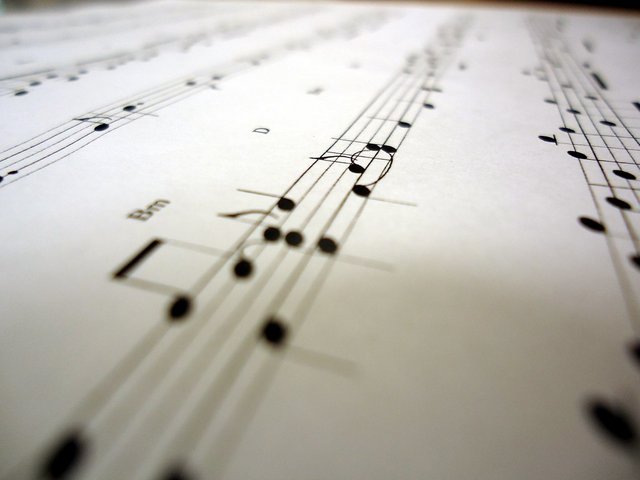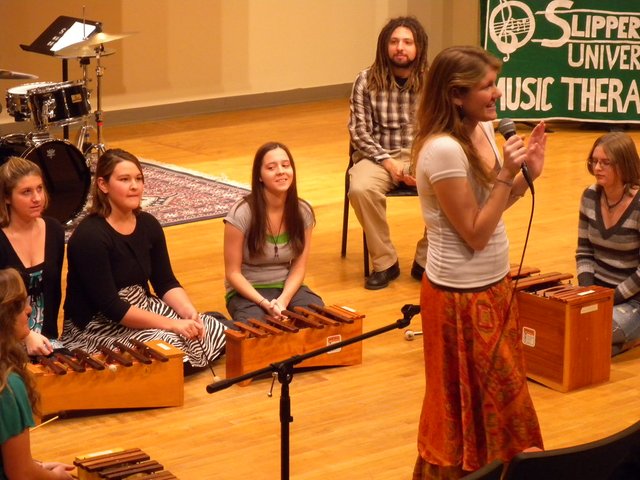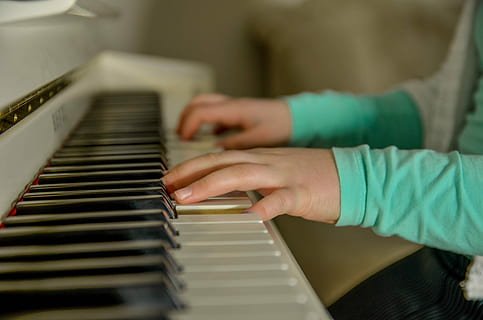Music therapy has previously been found to have beneficial effects on the treatment of mental illnesses and psychological disorders. One of them, major depressive disorder, is the subject of interest in this paper. The underlying research question, therefore is: To what extent can music therapy be effective in the treatment of depression?
The topic has been treated by referring to the empirical research and carefully examining the earlier studies. The chosen pieces of research have culturally diverse groups of patients, ranging from the American and Mexican, through the Finnish and to the Iranian participants, indicating the growing cross-cultural interest in the not yet so common therapeutic approach. All of the selected studies had the same aim: to determine how beneficial music is in reducing depressive symptoms and increasing our feeling of pleasure. However, the independent variables varied: namely, music was either given as the only means of therapy and then compared to the standard-care treatment (medications) or psychotherapy, or it was given in combination with the medications. On the basis of the investigation, it can be deduced that music therapy (MT) always led to positive changes in the psychological state of depressed patients, although it did not always remain significant at the follow-up assessments. In Erkkila et al (2011) it was shown that it is most effective when in combination with medications. Nevertheless, the music therapy should still be considered effective and patients exposed to this kind of treatment always felt better as a result.

Because of the above mentioned reasons, the effectiveness of MT as a primary and self-sufficient therapy cannot be that easily confirmed and it is the most effective when combined with the psychotherapeutic modalities or standard pharmacotherapy.
Introduction
The powerful effects of music on the human psyche have been known ever since the earliest civilizations and cultures. “Music is a moral law”, said Plato. “It gives a soul to the universe, wings to the mind, flight to the imagination, a charm to sadness and life to everything. It is the essence of order and leads to all that is good, just and beautiful, of which it is the invisible, but nevertheless dazzling, passionate and eternal form” (as cited in Grocke & Wigram, 2007, p. 13). Ancient Greeks nurtured a belief that music can either uplift or degrade and thus enhance or corrupt entire civilizations. More importantly, they recognized the therapeutic value of music and Greek priests used different musical modes to achieve changes in the patient’s state and to restore order between the body and soul. The Dorian mode, for instance, was thought to give rise to contemplation and purity, whereas the Phrygian mode instigated acts of peace and acquiescence (Caroll, 2011).

In the traditional Chinese society, likewise, music played a significant role (Thunwaniwat, n.d.). This was underpinned by the Confucius’s statement that “Music produces a kind of pleasure which human nature cannot do without (Huang, 2012).
Then, in the 19th century, several doctors in Europe and the USA were reported to be using music in the treatment of patients suffering from psychological and emotional disorders (Wheeler, 2015).
The same treatment was applied to veterans from World War One, who were suffering from physical and emotional trauma and who had positive responses to music played by community musicians, visiting them in hospitals. Consequently, the demand for specifically trained hospital musicians grew and thus the first university music therapy course was established at Columbia University in 1919. From that point on, music therapy grew as a profession and, after World War Two, the National Association for Music Therapy was formed (in 1950), which then developed into what is nowadays known as the American Music Therapy Association (Else, 2014).
Music therapy belongs to the group of creative arts therapies, alongside dance-movement therapy, art therapy and drama therapy (Punkanen, 2011), which all form a part of complementary medicine for the treatment of psychological and physiological illnesses (Pratt, 2004).
The American Music Therapy Association (AMTA) has defined Music Therapy as a ”clinical and evidence-based use of music interventions to accomplish individualized goals within a therapeutic relationship by a credentialed professional who has completed an approved music therapy program (“Definition and Quotes about Music Therapy”, n.d.) This definition emphasizes several key elements of the music therapy practice: Firstly, all musical interventions employed by therapists must be supported by scientifically-based research. Secondly, the notion of individualized goals implies that there are many potential reasons as well as aims for this sort of therapy and, lastly, a music therapist has to be a professionally trained therapist as well as a sensitive musician.

There are two main approaches to music therapy: active and receptive. In the active approach, clients are encouraged to improvise and compose music, to sing or play. They express their emotions externally. The receptive approach consists of listening to live or recorded music, without active participation (Punkanen, 2011).
One of the techniques used in the active music therapy is improvisation. The underpinning motive of this technique is to encourage a patient to delve into music and try to express himself/herself spontaneously. Throughout the improvisation, there is a constant interaction between the patient and the therapist and mutual influences can be noticed in the musical elements, such as rhythm, dynamics, melody, harmony (Ring, Przybilla, & Ruzicka, 2005). Out of this unique musical experience, thoughts, images and emotional content emerge, which are then deconstructed and verbally processed and discussed with the therapist (Erkkila et al, 2011). Once a “musical portrait” is established, possibilities arise for a therapist to modify the behavioural pattern of the patient, in the form of play (Ring, Przybilla, & Ruzicka, 2005).
Patient’s improvisation gives therapist an insight into his/her present state of mind: “The patient’s musical improvisation should be regarded as a symbolic scenic representation of his current internal situation. It is also a starting point for reflection and for verbal processing, from which parallels to daily life can be drawn” (Ring, Przybilla, & Ruzicka, 2005, p. 567).
Bruscia (1998) reviewed different types of receptive experiences and gave the following definition for this sort of music therapy: “In receptive experiences, the client listens to music and responds to the experience silently, verbally or in another modality“ (as cited in Grocke & Wigram, 2007, p.16). After the music experience, therapist engages in a discussion with the patient. He can ask focused questions to elicit information in order to try to understand their responses to it. Therefore, music therapists have to possess verbal skills to explore the musical experience. Nolan (2005) refers to verbal processing as “an integral part of /…/ music therapy practice” (as cited in Grocke & Wigram, 2007, p.25). Needless to say that music therapists have to be active listeners and emphatic collocutors.

It has been shown that music therapy is a valuable asset in treating many psychological disorders: It helps people with autism to improve their skills in communication and expression (“Music Therapy for People with Autism Spectrum Disorder,” n.d.) It may also help reduce symptoms of schizophrenia (“Music Therapy May Help Reduce Schizophrenia Symptoms,” 2006). People with learning disabilities can, with music therapy, develop skills in communication and interaction with others as well as the ability to reflect on and process their own feelings (“Music Therapy with People with Learning Disabilities,” n.d.) It is especially helpful for the patients diagnosed with depression, a common psychological disorder, estimated to have affected more than 350 million people globally, by October 2015, according to the World Health Organization (“Depression”, 2012).
According to the WHO report (Murray & Lopez, 1996, as cited in Fava & Kendler, 2000), depression is the fourth leading contributor to the global burden of disease. It also predicted that, by 2020, it would be the second contributor. The characteristics of this disorder include: lowering of self-esteem, feelings of worthlessness and guilt, persistent sadness and reduced energy for two weeks. Furthermore, it can manifest itself through disturbed appetite and sleep patterns, anhedonia (lack of pleasure), impaired concentration and lower work productivity. If left untreated, depression can lead to suicidal thoughts and, eventually death. It is the cause of 1 million deaths per year, according to the World Health Organization. Depression is usually treated with antidepressants (most common ones are SSRI’s – selective serotonine reuptake inhibitors, as well as tricyclic antidepressants) or with psychotherapy, or via the combination of both. However, another approach to fighting depression is through music therapy.
One of the suggested reasons for the efficacy of music therapy (MT) in treatment of depression is the aesthetic experience one feels during the MT session. It is well known that depression is closely related to the lack of pleasure, which is compensated through music. The aesthetic has a function of catharsis as well as personal development – one enters the risk of experiencing oneself differently and behaving differently to others (Ansdell, 1995, as cited in Maratos, Crawford, & Procter, 2011). This feeling of pleasure comes from the neurotransmitter dopamine, which is responsible for making us feel good and which is released while listening to music (Moore, 2011).
My investigation will focus only on the major depressive disorder and will try to answer the main question of this essay: “To what extent can music therapy be effective in the treatment of depression? “
This topic is of crucial importance because, if it is shown, by carefully conducted research studies, that music therapy does, indeed, have a beneficial effect in the treatment of major depressive disorder, then this opens doors to a new treatment, radically different from the standard one (medication). It is not unknown that antidepressants, apart from being very effective in fighting depression, have some side-effects. Moreover, after some period of not taking the medications, relapse of symptoms may occur. With music therapy, on the other hand, there are no side-effects and patient could “take the dose” whenever he/she feels that it is necessary, with no risks of overdosing or underdosing. What is left to be cleared up is whether music is powerful enough to be the only method of treatment in the cases of depressed patients, or is it more effective when combined with the standard care.
References
Carroll, D. (2011). Historical roots of music therapy: A brief overview. Revista do Núcleo de Estudos e Pesquisas Interdisciplinares em Musicoterapia (NEPIM), 2, 171-178.
Else, B. (2014). Music therapy and military populations: A status report and recommendations on music therapy research and practice policy. Retrieved from http://www.musictherapy.org/assets/1/7/MusicTherapyMilitaryPops_2014.pdf
Erkkila, J., Punkanen, M., Fachner, J., Ala-Ruona, E., Pontlo, I., Tervaniemi, M., Vanhala, M., & Gold, C. (2011). Individual music therapy for depression: randomised controlled trial. The British Journal of Psychiatry, 199, 132-139.
Fava, M. & Kendler, K. (2000). Major depressive disorder. Neuron, 2(2), 335-341.
Grocke, D., & Wigram, T. (2007). Receptive methods in music therapy: Techniques and clinical applications for music therapy clinicians, educators and students. Jessica Kingsley Publishers
Huang, L. (2012). The world of the Chinese: On the character. Retrieved from http://www.theworldofchinese.com/2012/09/on-the-character%E4%B9%90/
Moore, S. K. (2011, January 20). Why music listening makes us feel good. Retrieved from https://www.psychologytoday.com/blog/your-musical-self/201101/why-music-listening-makes-us-feel-good
Punkanen, M. (2011). Improvisational music therapy and perception of emotions in music by people with depression (Published academic dissertation). Retrieved from https://jyx.jyu.fi/dspace/bitstream/handle/123456789/27199/9789513943042.pdf
Ring, J., Przybila, B., & Ruzicka, T. (2006). Handbook of atopic eczema (2nd ed.). Berlin: Springer-Verlag
Thunwanivat, J. (n.d.). Chinese Music in Chinese and Thai Culture. Retrieved from http://www.asianscholarship.org/asf/ejourn/articles/jintana_t.pdf
Wheeler, B. (2015). Music therapy handbook. New York, NY: Guilford Publications.
HIVE IS ALIVE!!!
JOIN US, YOU'LL HAVE EXACTLY THE SAME BALANCE AS YOU HAVE HERE ON STEEM WITHOUT THE CENTRALIZATION AND CENSORSHIP!!
https://hive.blog
https://twitter.com/innerhive
br>
Downvoting a post can decrease pending rewards and make it less visible. Common reasons:
Submit